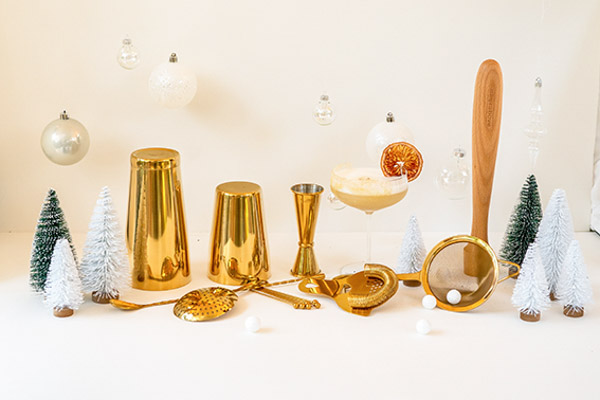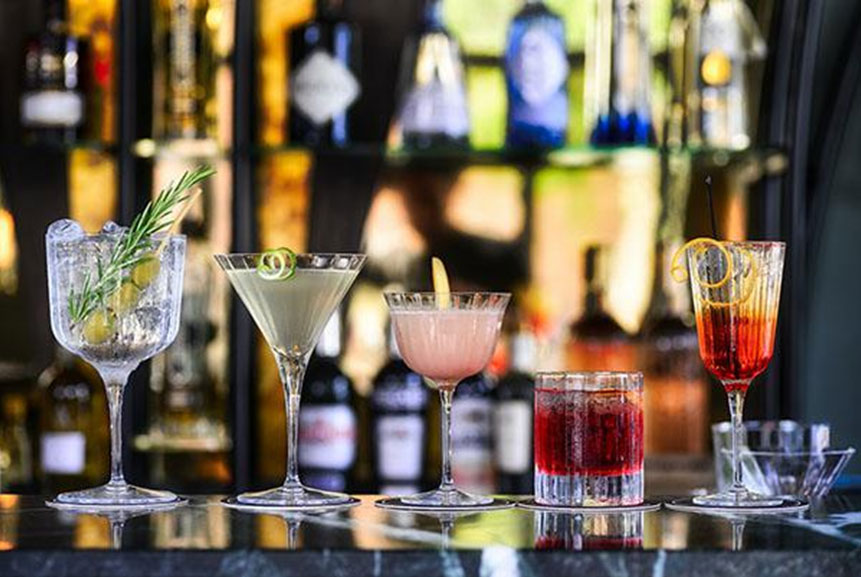In the world of spirits, whiskey and brandy have such a rich history and timeless feel, wouldn’t you say? There’s just something about these two beloved spirits that entices connoisseurs and newcomers alike with their depth. Both cherished for...
In the world of spirits, whiskey and brandy have such a rich history and timeless feel, wouldn’t you say? There’s just something about these two beloved spirits that entices connoisseurs and newcomers alike with their depth.
Both cherished for their complex flavors and exceptional craftsmanship, whiskey and brandy hold a special place in the hearts of cocktail lovers worldwide. Today, we’ll delve into the realms of whiskey and brandy, exploring their origins, production methods, flavor profiles, and the distinct characteristics that set them apart.
So, grab your favorite glass, and join us as we investigate what makes whiskey and brandy so special– and what sets them apart from each other.
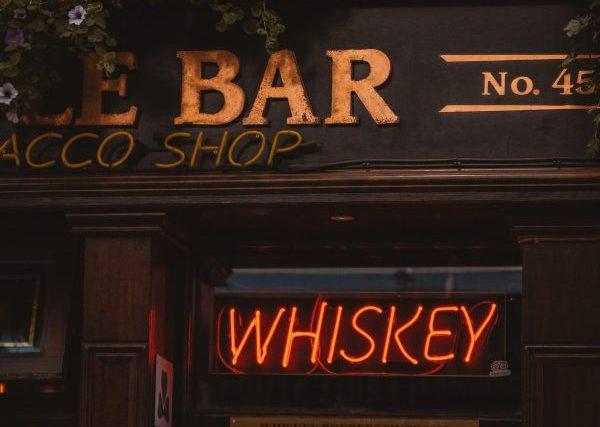
Photo by Andrea Ferrario via www.unsplash.com
Whiskey: The Elixir of Ages
Whiskey, derived from the Irish and Scottish word “Uisge Beatha,” meaning “water of life,” is a spirit that has been cherished for centuries. Crafted through the distillation of fermented grain mash, whiskey encompasses a broad range of styles and regional variations. From Scotch whisky to American bourbon, each variety carries its own unique flavors and cultural heritage.
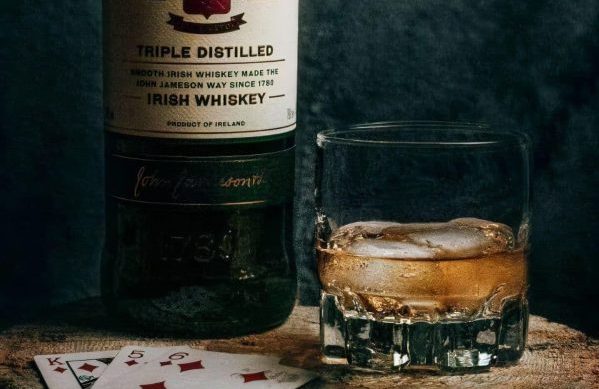
Photo by Aris Rovas via www.unsplash.com
Origins and Production of Whiskey
The roots of this grain spirit can be traced back to over a thousand years ago, originating in Ireland or Scotland. The art of whiskey-making evolved throughout the ages, with notable contributions from these two countries, which are renowned for their distinct styles of whiskey production.
Irish whiskey is traditionally triple-distilled and often made from a mixture of malted and unmalted barley. The result is a smooth and approachable spirit with a subtle sweetness and hints of fruit and vanilla.
On the other hand, Scottish whisky, or Scotch, is typically made from malted barley and aged in oak barrels. Scotch whisky is categorized by region, each known for its unique flavor characteristics. From the smoky and peaty Islay whiskies to the lighter and fruitier Highland whiskies, Scotch offers a diverse array of flavors to explore.
In addition to Ireland and Scotland, whiskey production has expanded across the globe. The United States, Canada, Japan, and other countries have developed their own whiskey traditions & styles– including the extremely popular bourbon– resulting in a fascinating tapestry of flavors.
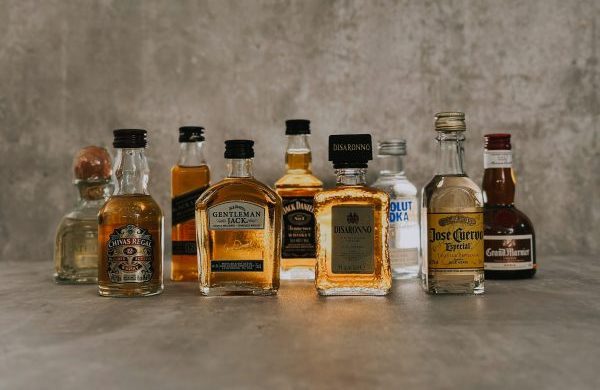
Photo by SJ via www.unsplash.com
Flavor Profiles of Whiskey
One of the defining aspects of whiskey is its diverse range of flavor profiles. From the warm caramel notes of bourbon to the robust smokiness of Islay Scotch, whiskey caters to a wide spectrum of palates. The type of grain used, the aging process, and the regional influences all contribute to the final taste and essence of the individual spirit.
For example, bourbon– a quintessentially American whiskey– is known for its sweet and rich flavor. The high corn content creates a creamy sweetness, while the aging in charred oak barrels imparts notes of caramel, vanilla, and oak.
Scotch whiskies offer a wide array of flavors.
are known for their peaty and smoky character, reminiscent of bonfires on the beach. Speyside whiskies, on the other hand, are often lighter and fruitier, with notes of apples, pears, and honey.
Japanese whisky has recently gained global recognition for its exceptional craftsmanship and attention to detail. It exhibits a delicate balance of flavors, often incorporating subtle nuances of oak, spice, fruit, and smoke– as the Japanese were reportedly trained under Scotch whisky masters.
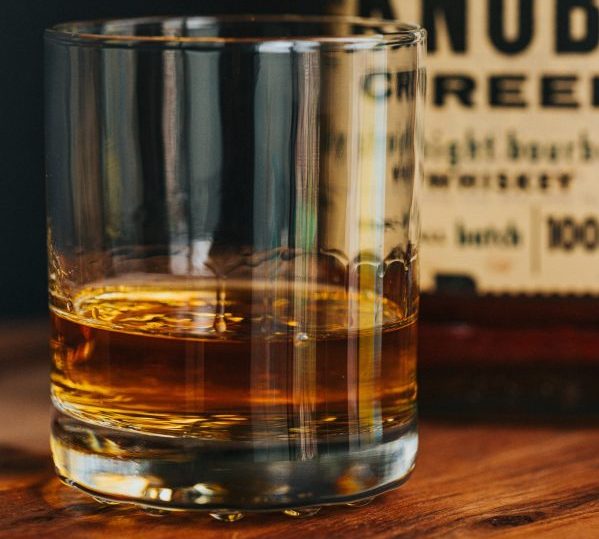
Photo by Nathan Dumlao via www.unsplash.com
Types of Whiskey
Note: There is a spelling difference of whiskey vs whisky, depending on where the production process takes place. American and Irish whiskey are spelled with the e, while all others are spelled without.
Scotch Whisky: Produced in Scotland and typically made from malted barley. Varieties include Single Malt Scotch (from one distillery, malted barley) and Blended Scotch (malt and grain whiskies from different distilleries). Irish Whiskey: Produced in Ireland, this can include Single Malt, Single Pot Still, Grain Whiskey, and Blended Irish Whiskey. American Whiskey: Produced in the United States. Some popular styles include bourbon (primarily made from corn & aged in new charred oak barrels), rye whiskey (made primarily from rye grain and distinct from Canadian rye), and Tennessee whiskey (similar to bourbon but made in Tennessee & filtered through sugar maple charcoal, which is called the Lincoln County Process). Canadian Whisky: Produced in Canada and often called “rye” despite not necessarily containing a high percentage of rye. Blended Canadian whisky is common.
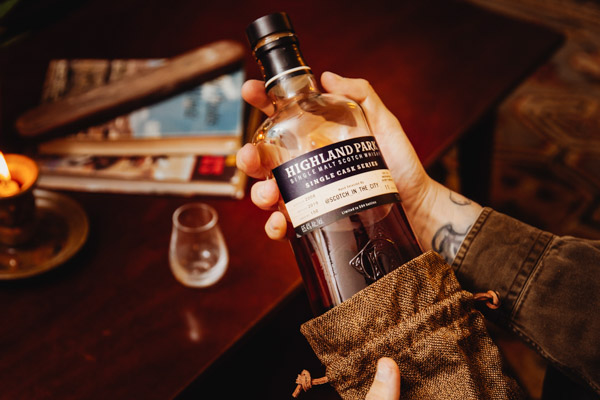
Photo by Taylor Brandon via www.unsplash.com
Japanese Whisky: Modeled after Scotch whisky and produced in Japan with a growing reputation for quality and craftsmanship. Single Malt Whiskey: Made from 100% malted barley and produced at a single distillery. Common in Scotch and increasingly in other countries. Single Pot Still Whiskey: Unique to Ireland and made from a mix of malted & unmalted barley.
To learn more about whiskey, check out our other detailed articles about all the different types, production, etc., here and here.
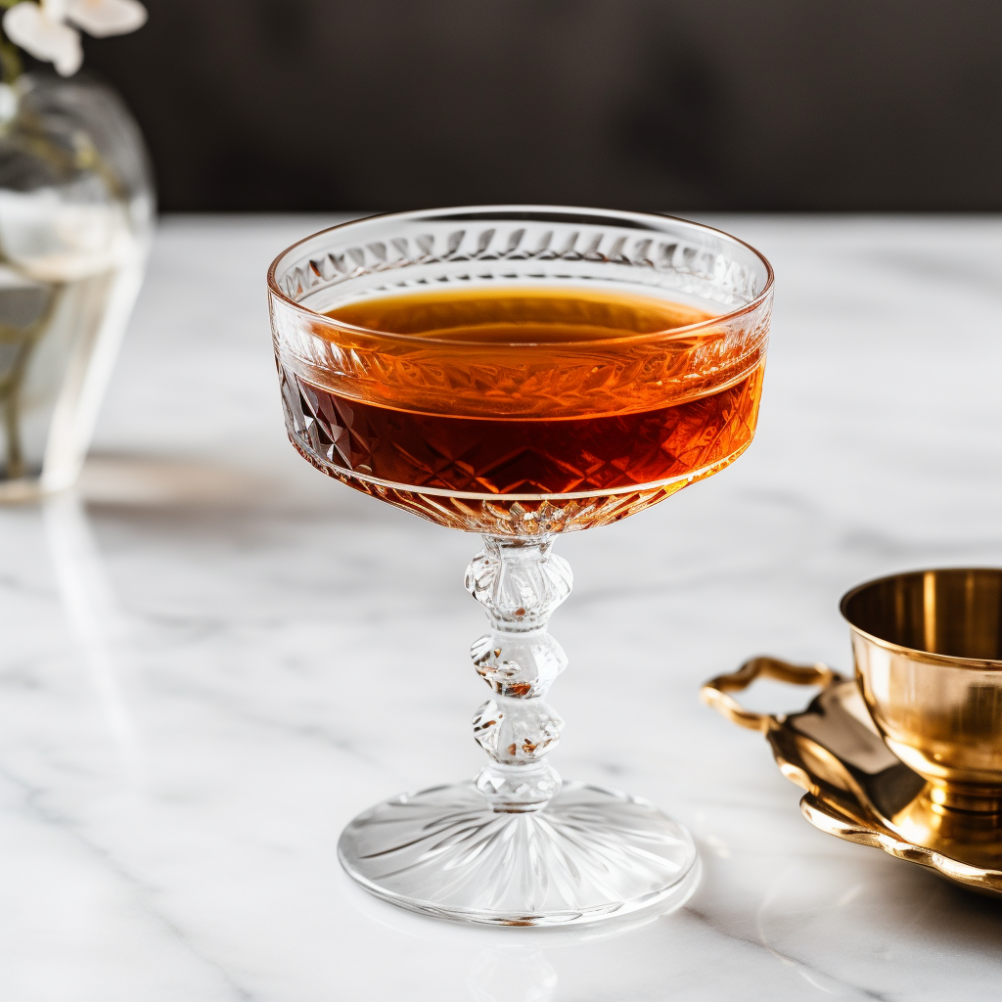
Copyright A Bar Above
Cocktail Recipes with Whiskey
Here are a few of our favorite delicious drinks with whiskey:
Old Fashioned: One of the oldest known cocktails of modern day, the Old Fashioned consists of whiskey, bitters, and simple syrup or a muddled sugar cube. Simple & delicious! Manhattan: The Manhattan is a super classic, easy cocktail consisting of rye, sweet vermouth, and aromatic bitters. Whiskey Sour: Feel adventurous? Mix your whiskey with egg whites, fresh lemon juice, and simple syrup for a delicious, refreshing cocktail. Ward 8: This classic cocktail combines rye whiskey with both sweet and sour elements, creating a blend of fruity, citrus flavors with a touch of grenadine for sweetness. Mint Julep: You can’t go wrong with bourbon whiskey, simple syrup, and fresh mint leaves! Sazerac: Another important classic, the Sazerac is similar to an Old Fashioned but with a few tweaks, the most notable being the addition of absinthe.
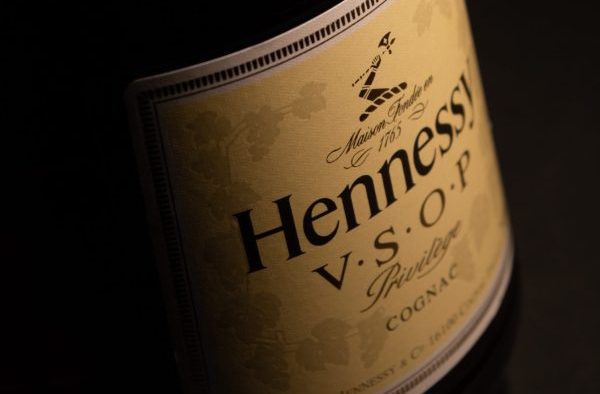
Photo by White Field Photo via www.unsplash.com
Brandy: The Essence of Elegance
Brandy is a premium spirit distilled from fermented wine or fruit juice. It has a long and storied history, with origins that can be traced back to ancient civilizations such as Greece and Rome.
The production of this popular spirit flourished in regions with favorable grape-growing conditions, most notably Cognac and Armagnac in France, where the raw material could be easily sourced.
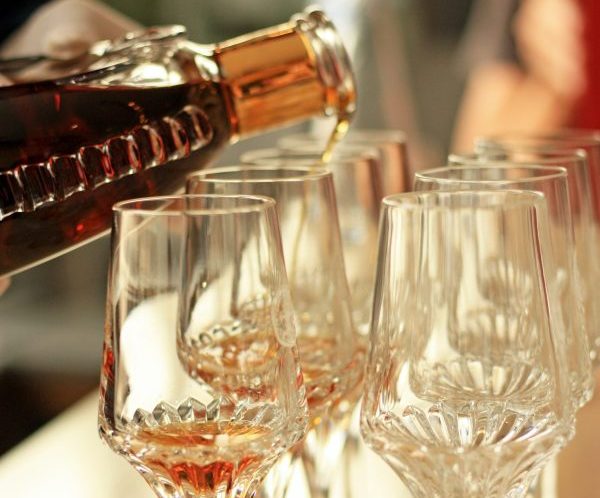
Photo by Cody Chan via www.unsplash.com
Origins and Production of Brandy
While the birthplace of brandy is often associated with the Cognac region of France, that is actually incorrect– Cognac just happens to (probably) be the most popular type of brandy and therefore gets all the credit.
What we do know is that brandy production began in the early 1300s and that it was originally used for medicinal purposes.
Cognac is a protected designation of origin (PDO) and must adhere to strict production guidelines. The grapes used in Cognac production are primarily Ugni Blanc, Colombard, and Folle Blanche (white wine). After fermentation, the wine undergoes double distillation in copper pot stills, followed by aging in French oak barrels for at least two years. Armagnac, another esteemed French brandy, must be produced in the Armagnac region to qualify and is actually older than Cognac. Armagnac is known for its traditional distillation process in column stills, which impart a distinctive character to the spirit. The aging of Armagnac also takes place in oak barrels, allowing it to develop complex flavors over time.Beyond France, brandy production thrives in other countries, including Spain, Italy, and the United States. Depending on the region, the production process can vary. (More on the types below.)
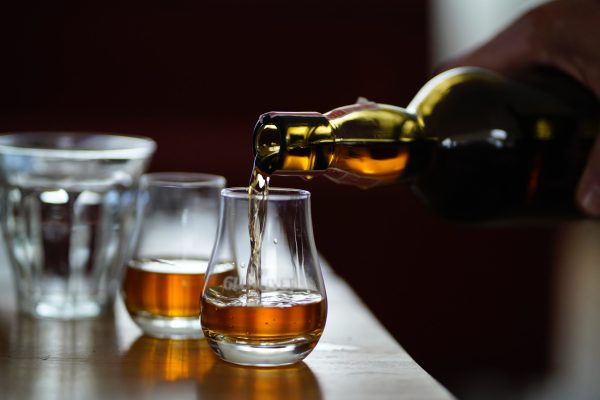
Photo by Dylan de Jonge via www.unsplash.com
Flavor Profiles of Brandy
Brandy showcases a broad spectrum of flavors, influenced by the grapes used, the aging process, and the regional traditions. The flavor profiles can range from light and delicate to bold and robust. Cognac, with its refined reputation, often exhibits flavors of dried fruits, spices, and oak. The aging process in Limousin oak barrels adds depth and complexity, with notes of vanilla, caramel, and toasted nuts. Armagnac offers a more rustic and earthy character. It is often described as having notes of prunes, figs, and spices, with a touch of “rustic” charm. American brandies, such as those produced in California, offer a range of styles. From brandies aged in bourbon barrels– which infuse them with rich vanilla and caramel flavors– to fruit brandies made from apples, pears, or cherries, each expression brings its own unique profile.
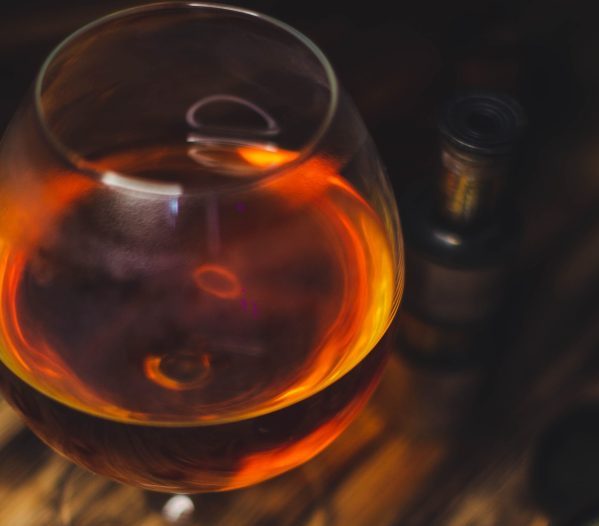
Photo by Nika Benedictova via www.unsplash.com
Types of Brandy
V.S. (“very special”) or ??? (three stars) designates a blend in which the youngest brandy has been aged for at least two years in an oak cask. V.S.O.P. (“very superior old pale”), Reserve, or ????? (five stars) designates a blend in which the youngest brandy is stored for at least four years in a cask. XO (“extra old”) or Napoleon designates a blend in which the youngest brandy has a maturation process of at least six years. Hors d’âge (“beyond age”) is a designation which is formally equal to XO for Cognac, but signifies Armagnac that is at least ten years old. In practice, the term is used by producers to market a high-quality product beyond the official age scale. Cognac is a high-quality brandy that originates from the Cognac region in France. Traditional Cognac is distilled from white wine and aged in oak barrels, resulting in a rich and smooth spirit known for its complex taste, often featuring notes of fruit, oaky flavors, and notes of vanilla. Grappa is an Italian pomace brandy, made from the pomace left over after winemaking. Palinka is a Hungarian fruit brandy which dates back to the 14th century. Meanwhile, Palenka (different spelling) comes from the Czech Republic and Slovakia. Pisco is a Peruvian brandy– although Chile makes it to under different classifications, and the two nations battle over the term. As opposed to Cognac, with mandatory oak barrel aging, Peruvian Pisco cannot be aged in wood but rather is aged in clay pots. It is technically a brandy since it is distilled from fruit and is therefore a liquor (not liqueur), but it is slightly different, being distilled at bottling strength instead of being distilled at a higher proof and then having water added to bring it down to about 40 proof (and not being aged in wooden barrels).
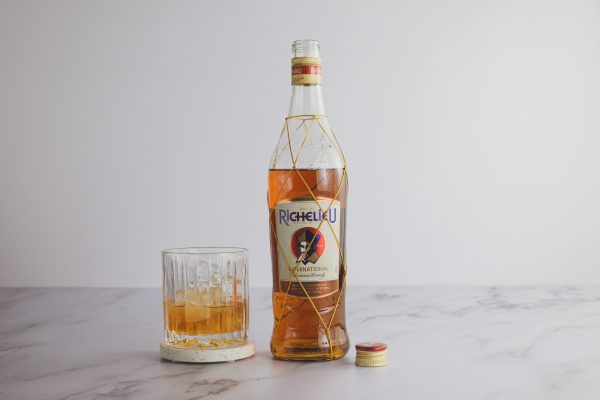
Photo via www.unsplash.com
Rakia is a Balkan fruit brandy, but it’s not to be confused with Raki, a Turkish anise-flavored spirit distilled from grape pomace à la Ouzo. Schnapps is a broad classification of fruit brandies from Germany. Armagnac is an aged French brandy hailing from a region south of Cognac. Three sub-regions exist within Armagnac and, as opposed to Cognac’s double alembic still distillation, brandy production in the area typically involves a single distillation using column stills. Armagnac’s spirit classification system is similar to Cognac’s. Here though, V.S.O.P. indicates a minimum age of five years, rather than four, X.O. stays put at six years, and Hors d’Age indicates a minimum of 10 years. Slignac is a young Cognac, aged only 2 years, giving a crisp taste to the traditionally aged Cognac. Brandy de Jerez is a Spanish brandy aged in sherry casks and made in the Jerez region of Andalusia. It’s aging classifications are as follows: Brandy de Jerez Solera: Aged one year Brandy de Jerez Solera Reserva: Aged three years Brandy de Jerez Solera Gran Reserva: Aged ten years Calvados hails from France; however, it’s an apple brandy and must come from the Normandy region.
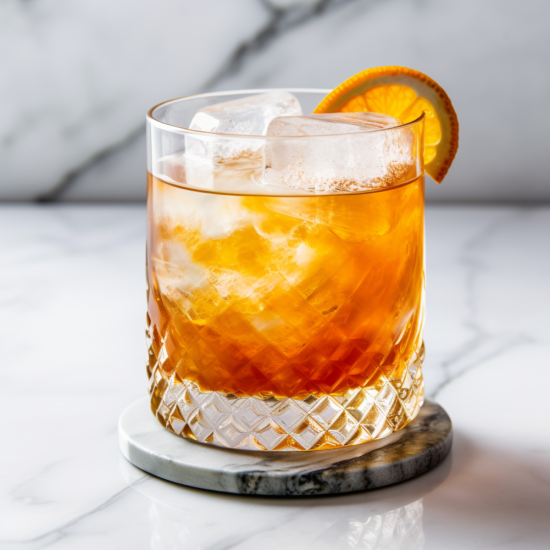
Copyright A Bar Above
Popular Cocktails with Brandy
Pisco Sour: This is a twist on on the classic cocktail (Whiskey Sour), but with the sweet taste of Pisco. Apple Cider Margarita: A Margarita with the spiced, fruity flavor of apple cider and apple brandy? Yes, please! Fish House Punch: Like a lot of punches, this boozy drink mixes a few types of alcohol, including the addition of peach brandy. Hot Toddy: You can actually choose between whiskey or brandy for this one, but I think the sweet flavor of brandy mixes well with the fresh lemon juice. Sidecar: This classic brandy cocktail mixes Cognac, orange liqueur, and lemon juice, resulting in a balanced and tangy libation with a touch of sweetness.
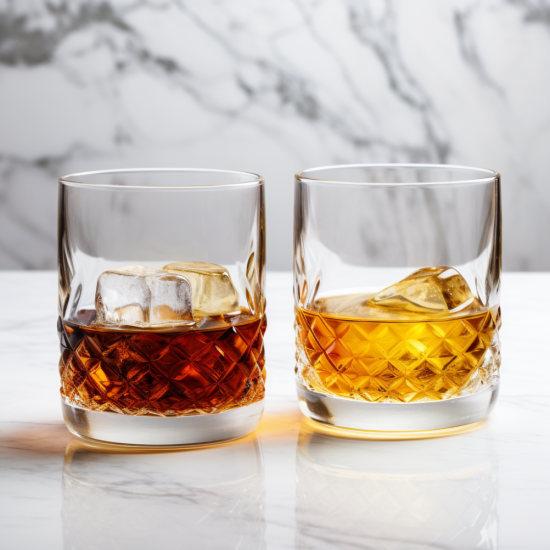
Copyright A Bar Above
The Difference Between Brandy and Whiskey
To boil it down, here are the key differences between brandy and whiskey:
Base Ingredients: Brandy is made from fermented fruit juice, typically white grape varieties, while whiskey is made of fermented grain mash, such as barley, corn, rye, or wheat. The final alcohol content ranges from 35%-60% for brandy and 40%-50% for whiskey. Distillation: Typically, brandy is distilled at a lower proof and often aged in wooden casks, and whiskey is distilled at a higher proof before being aged. Flavor Profile: One of the biggest differences between whiskey and Cognac & brandy is their distinct flavors, based on the primary ingredients. Brandy has a more fruit-forward, sweeter flavor with notes of grapes, apples, pears, and plums. Whiskey offers a stronger flavor, ranging from smooth with semi-sweet notes of oak and vanilla to a robust and smoky taste, depending on the type of grain and the distillation process. Production Regions: Brandy is predominantly produced in wine regions like France, Spain, and Italy (and the wine-making areas of Peru and Chile for Pisco). Whiskey is distilled worldwide, with well-known types like Scotch, bourbon, rye whiskey, and Irish whiskey.These are some of the fundamental differences that set brandy and whiskey apart, influencing their taste, production, and characteristics.
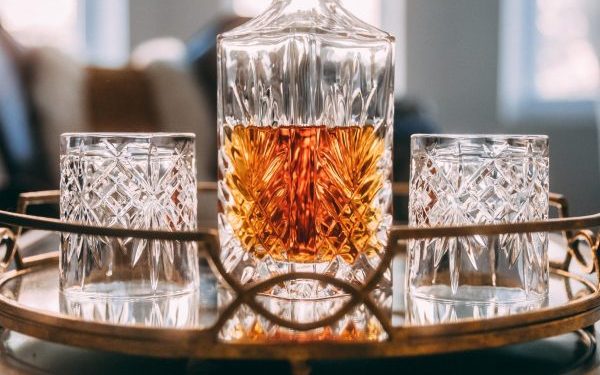
Photo by Victor Hughes via www.unsplash.com
Brandy Vs Whiskey: A Matter of Preference
Choosing between whiskey and brandy ultimately comes down to personal preference and perhaps the occasion. Both spirits offer a diverse range of flavors and styles, catering to different tastes and moods.
If you gravitate towards the warmth of oak and the interplay of grain flavors, whiskey might be your spirit of choice.
On the other hand, if you appreciate the elegance of fruit-forward notes and the sweet, aged flavors of vanilla & butterscotch, brandy may be your drink of preference.

Photo by Adam Wilson via www.unsplash.com
Appreciating the Distinct Charms of These Delicious Spirits
Whiskey and brandy are both important in the world of alcoholic spirits, each with its own captivating history and devoted following. Whether you find yourself drawn to the smoky allure of Scotch whisky or the refined elegance of Cognac, exploring the worlds of whiskey and brandy is always a fun, delicious process.
So… Which of these two distinct spirits do your taste buds prefer? What is your favorite mixed drink with either of these distilled liquors? Are you just a big fan of both each spirit’s distinct flavors, or do avoid one or the other? Leave us a comment and let us know… Cheers!







